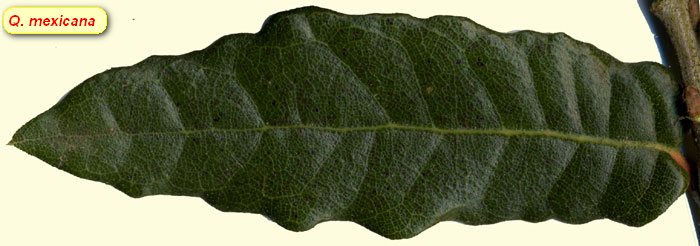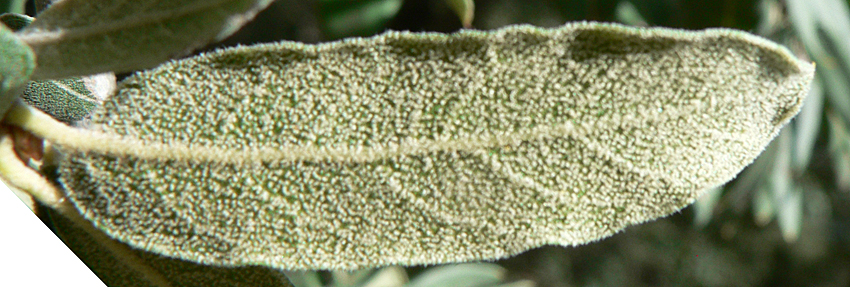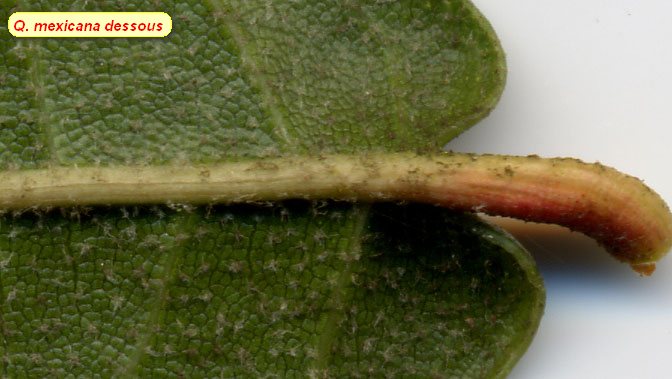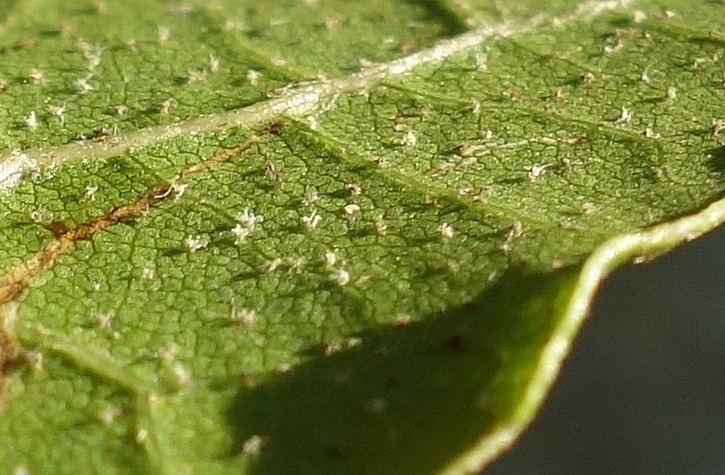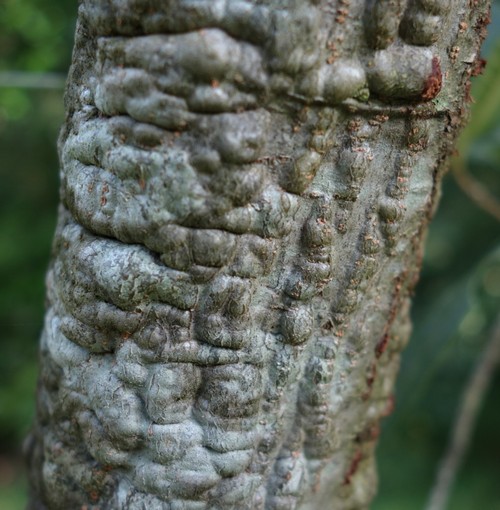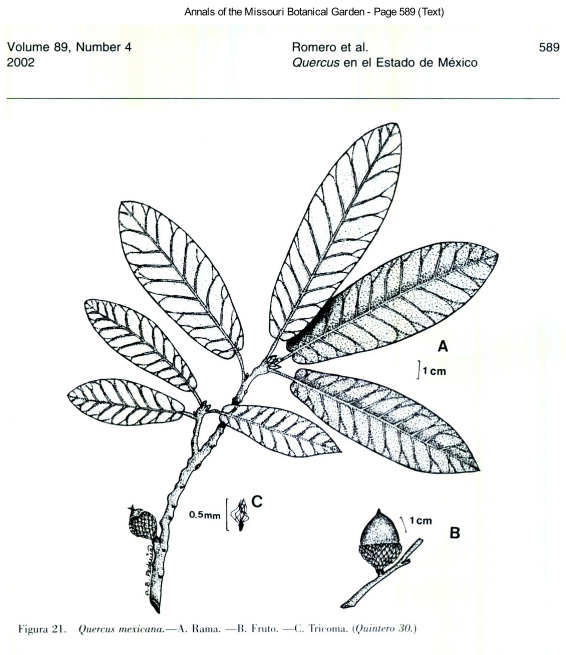| Quercus mexicana | |
| Author |
Bonpl. 1809 Pl. Aequinoct. 2: 35 Diagnosis here |
| Synonyms | castanea var. mexicana (Bonpl.)A.DC
1864 castanea var. integra Oerst. 1871 mexicana f. lanulosa Trel. and f. perfertilis Trel. mexicana fo. bonplandii Trel. 1924 malifolia Trel. 1924 Diagnosis here pablillensis C.H.Muller 1942 rugulosa Mart. & Gal. 1843 (A.Camus n° 380) rugulosa f. subtruncata Trel. 1924 sipuraca Trel. 1924 |
| Local names | encino tezahuatl; |
| Range | Mexico (Coahuila, Guanajuato, Hidalgo, Mexico, Nuevo Leon, Puebla, Querétaro, San Luis Potosi, Tamaulipas, Tlaxcala , Vera-Cruz); 1600-3050 m; |
| Growth habit | usually small tree to 3-8 m high, but reaches 20 m; |
| Leaves |
3-10 x 1.5-4 cm; deciduous; leathery; oblong, elliptic or lanceolate; apex obtuse or rounded, shortly bristle-tipped; base round to cordate, seldom truncate; margin thick, slightly revolute, cartilaginous, often undulate, entire; adaxially dark green, lustrous, hairless except some stellate hairs along midrib and at the base; beneath with pale grey brown tomentum made of scattered, tangled, fascicled trichomes, like dots on the epidermis, and axil tufts; 7-12 vein pairs nearly flat adaxially, slightly prominent beneath (even though midrib is strongly raised), straight but forked and anastomosed before reaching margin, at an angle of 45-50° with the midrib; adaxially the midrib is sunken; epidermis papillose; petiole 2-8 mm long, hairy at first, then glabrescent, with the base pinkish; |
| Flowers | male catkins 3-5 cm long, woolly; female inflorescences less than 0.5 cm long, with 1-4 pubescent flowers; |
| Fruits | acorn 0.8-1.4 cm long, subglobose, hairless except at mucronate apex; singly or to 2-3 together, on a peduncle less than 0.5 cm long; cup halfround with rim not rolled inside, enclosing 1/3 to 1/2 of nut, with thin, apicaly rounded, pubescent scales; maturing in 2 years between August and December; |
|
Bark, twigs and |
bark scaly, dark grey; twig slender (1.5-2 mm thick), angled in cross-section, brown stellate tomentose at first, becoming hairless, grey brown; lenticels of the same colour, reaching 11 mm long; bud 2-3 cm long, ovoid, slightly pointed, with ciliate scales ; stipules 3-5 cm long, deciduous or sometimes persistent around apical bud; |
| Hardiness zone, habitat | hardy in zone 6(withstands -15° C); perfers dry soils; fast growing; |
| Miscellaneous | -- A.Camus : n°
313; -- Sub-genus Quercus, section Lobatae, Series Erythromexicanae, Group Mexicanae; -- One must not confuse this taxon with Q. mexicana Benth. 1840 not Bonpl.1809, which is a synonym of Q. crassipes Bonpl. 1809; -- Possible confusion with Q. eduardi as both have contorted fascicled hairs abaxially ; however eduardi has leaves oblong or oblanceolate or elliptic-oboval, with margin usually toothed near apex, and 5-8 vein pairs. -- Different from Q. crassipes, in having less vein pairs (to 19 for crassipes), abaxially with contorted trichomes looking like dots (even indumentum for crassipes), cupule with erect margin (involute for crassipes), secondary veins at an angle of less than 90° (near 90° for crassipes) and a petiole likely pubescent (glabrescent for crassipes) |
| Subspecies and varieties |
-- Hybridizes with
Q. grahamii. |
| Pictures |
Moer pictures HERE
|
